Fuelled by multicultural traditions, dynamic investment, and an active push to bring art to the masses, Singapore has emerged as a global art hub.
On the banks of the Singapore River, as it winds its way out to Marina Bay, a pair of bronze statues unveiled in 2002 hints at the dynamics that shaped the early days of Singapore. A Great Emporium by Malcolm Koh shows a European in a safari hat discussing business with a Chinese trader, labourers weighing a bag of goods to the side, while in River Merchants by Aw Tee Hong, the merchant Alexander Laurie Johnston is rapt in conversation with a Chinese trader and Malay dignatory as workers strenuously load a bullock cart.
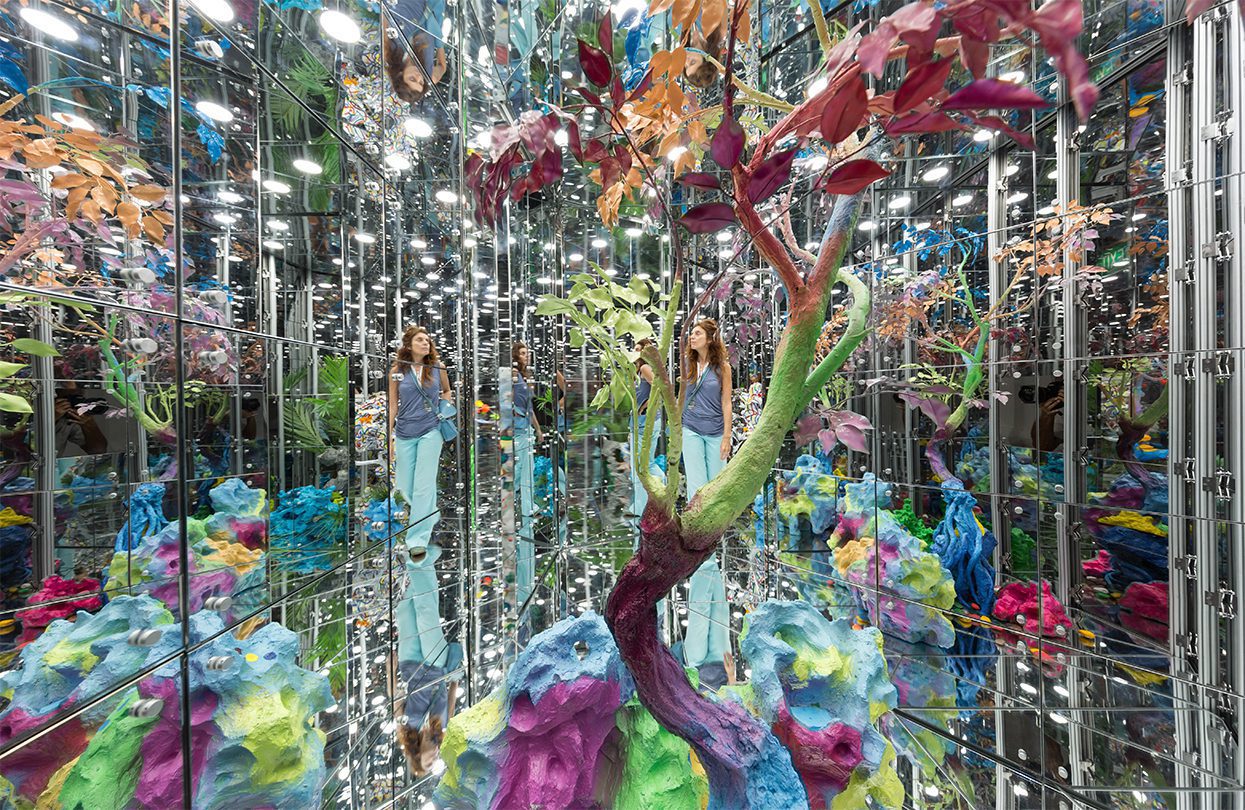
Labyrinth of mirrors and a variety of plants installations, Noahs Garden II by Deng Guoyuan during Singapore Biennale 2016
Singapore’s role as a hub of commerce should come as little surprise, given Sir Stamford Raffles’ seminal words in 1819 soon after arriving here: “Our object is not territory but trade, a great commercial Emporium, and a fulcrum whence we may extend our influence politically.” That the Lion City uses art to celebrate its economic origins speaks volumes about the importance of that art here in the Little Red Dot. Singapore might not boast the art history or pedigree of the Italian Renaissance Italy or Impressionist-era France, but it has a booming, pulsing art scene with plenty of home-grown talent supported by world-class museums and galleries.
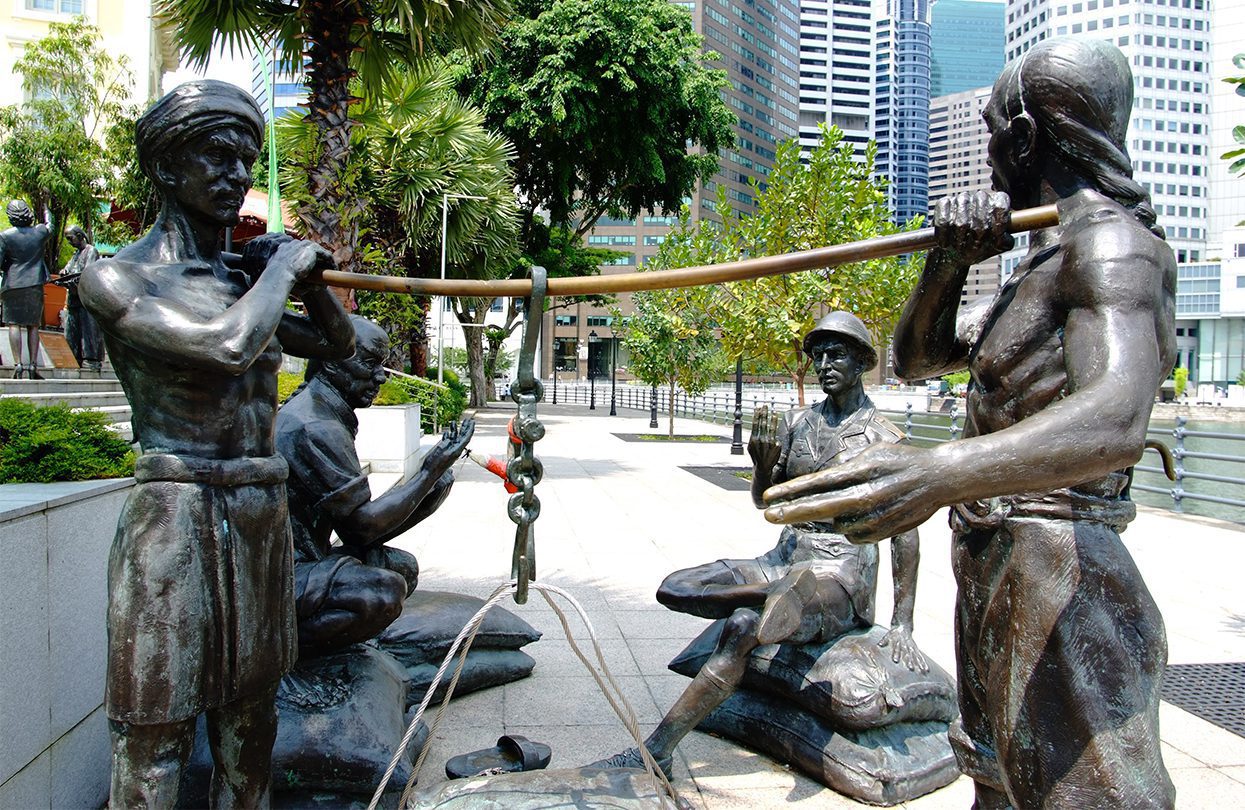
A Great Emporium by Malcolm Koh
“The art scene in Singapore has grown exponentially in the last few decades,” notes Russell Storer, Deputy Director, Curatorial & Research, at the National Gallery, which opened in 2015. “It has been triggered by key developments in government policy, such as the establishment of the National Heritage Board and the National Art Council in the late 1980s, the opening of the Singapore Art Museum in 1996, and a growing engagement with the international art world through participation in the Venice Biennale [since 2001] and the establishment of the Singapore Biennale in 2006.”
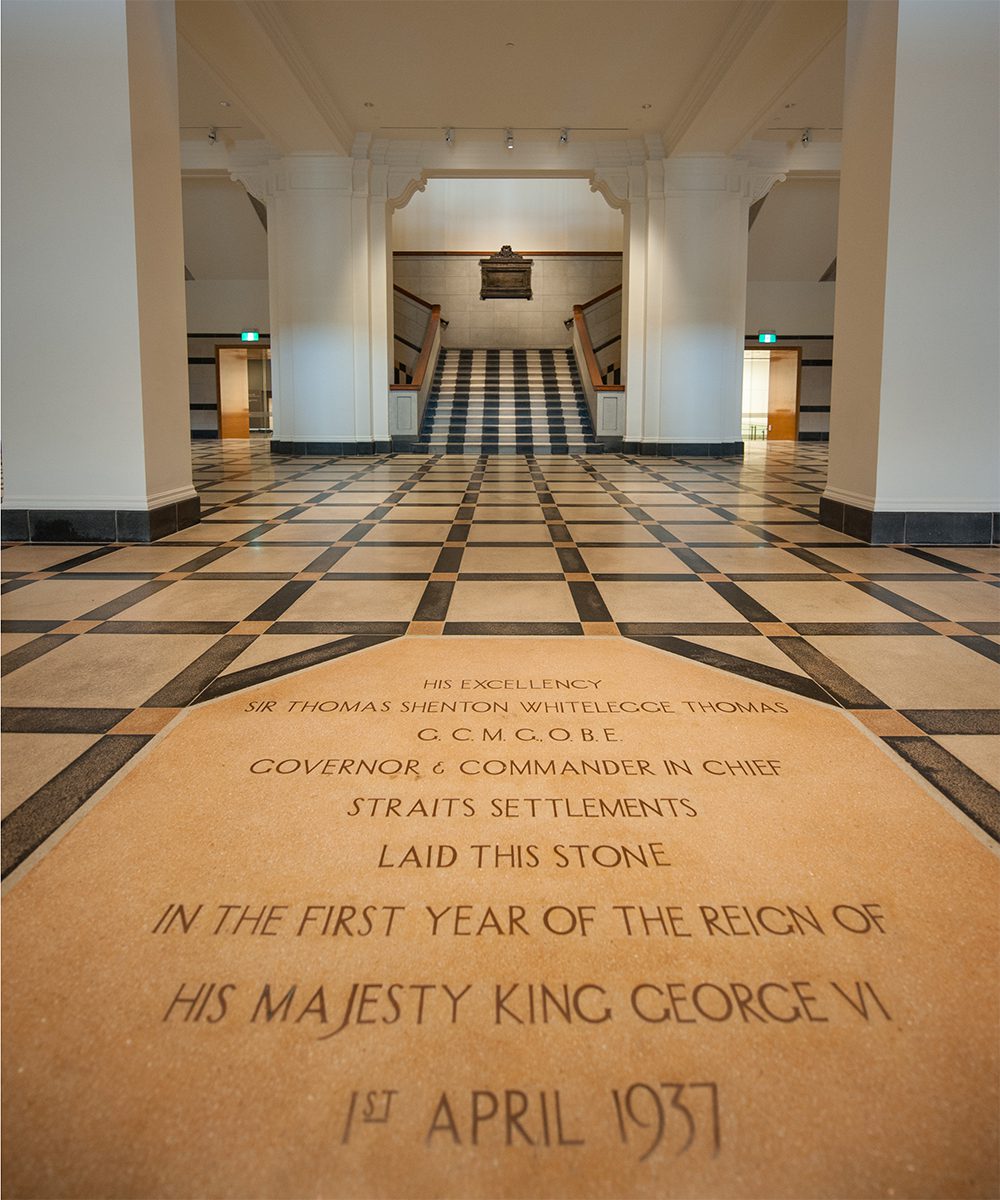
Foundation stone at the National Gallery Singapore
Singapore’s early art isn’t filled with names that are internationally recognisable or icons of global painting. Some of the oldest pieces in the National Gallery date to the 19th century, including an engraving by Heinrich Leutemann titled UnterbrocheneStraßenmessung auf Singapore (Interrupted Road Surveying in Singapore), made around 1865. It recounts an incident believed to have taken place in the midst of a road survey in 1835 when a Malay Tiger sprung from the jungle and attacked the surveyors. The piece, according to Storer, “marks a shift in colonial depictions of Singapore, where we begin to see a more intimate encounter with the natural world. This kind of imagery also set the stage for the rise of modern Singapore art from the 1930s, when a visual imagining of the ‘tropical’ would become a key theme for modern art in this region.” Other seminal work includes Lynx by Low Kway Song (1921), one of the earliest oil paintings by a local professional artist in Singapore and Portrait of Lim Loh by Chinese artist Xu Beihong (1927), a portrait of one of Singapore’s pioneering entrepreneurs.
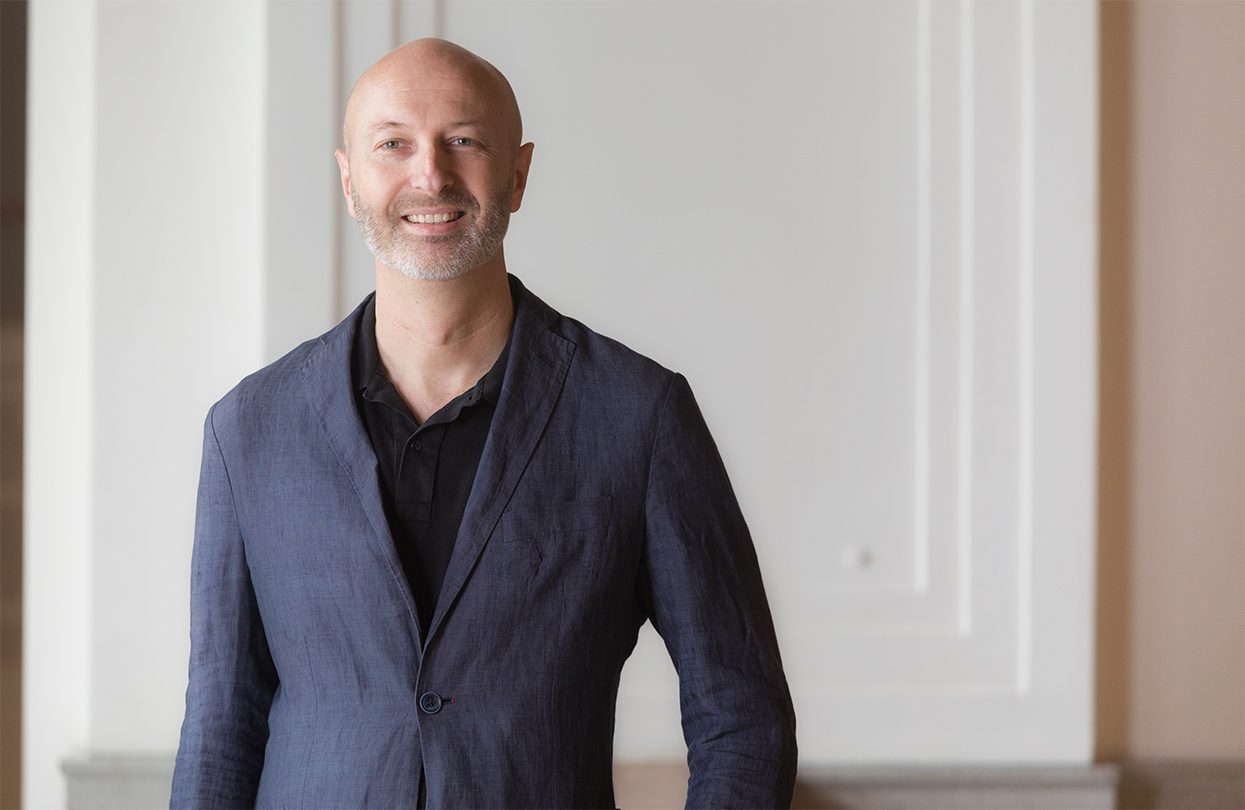
Russell Storer, Deputy Director, Curatorial & Research, at the National Gallery
The most prominent art movement in the Lion City has been the 1950s Nanyang Style, the work of Chinese migrants from Nanyang who had come to Singapore in the first half of the 1900s. They continued the Chinese tradition of inks and brushes, but added tropical elements, often featuring people and scenes from locations around Indonesia. Among the movement’s most revered artists were Liu Kang, Chen Chong Swee, and Cheong Soo Pieng, whose Drying Salted Fish painting is recreated on the back of Singapore’s $50 note.
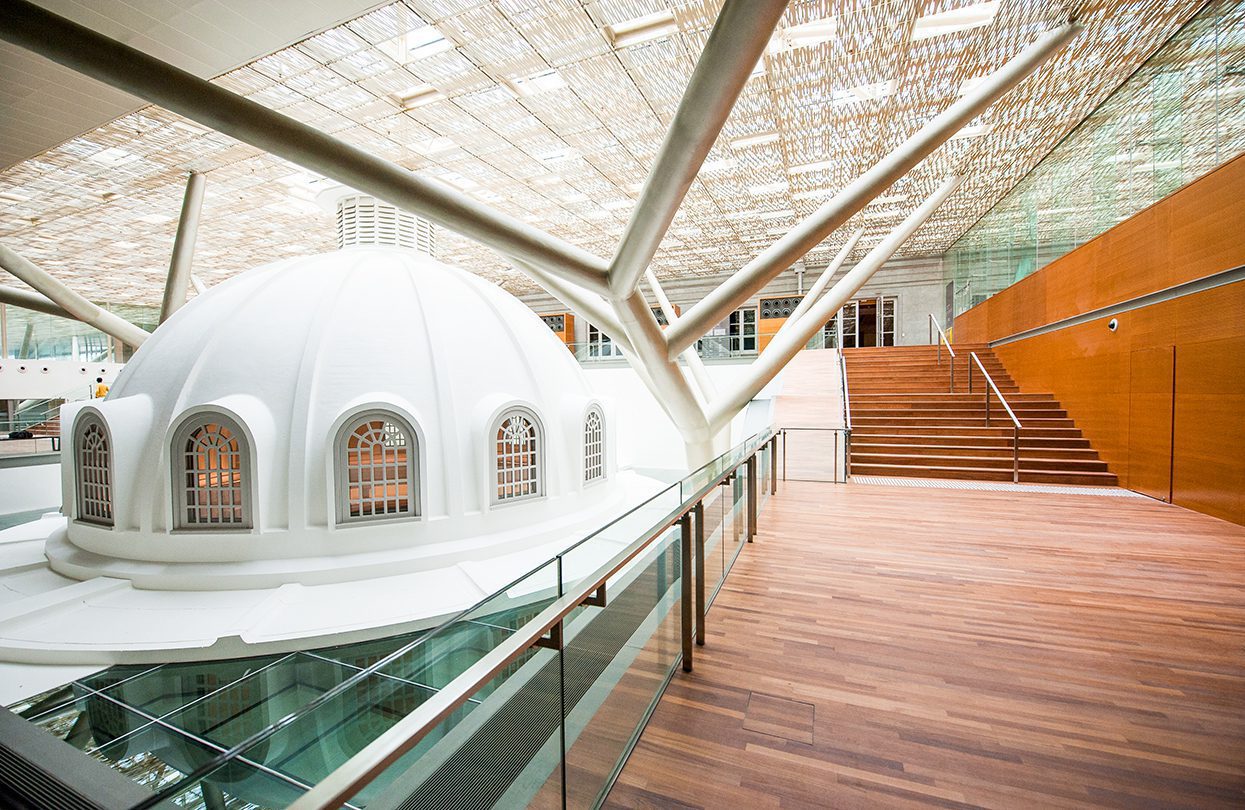
Terrace by the former Supreme Court at the National Gallery – Image Credit to National Gallery Singapore
As the century progressed, multiculturalism began to infiltrate artistic practice and the Lion City’s contemporary art movement started to establish itself. Storer notes that “in the late 1980s and 1990s, artists formed collectives and staged experimental exhibitions and events that generated new modes of contemporary art such as performance and installation.” Some of these key moments are detailed in the National Gallery’s Siapa Nama Kamu? (meaning ‘what is your name’) exhibition, with more than 300 works by the country’s leading artists from the 19th century to present day.
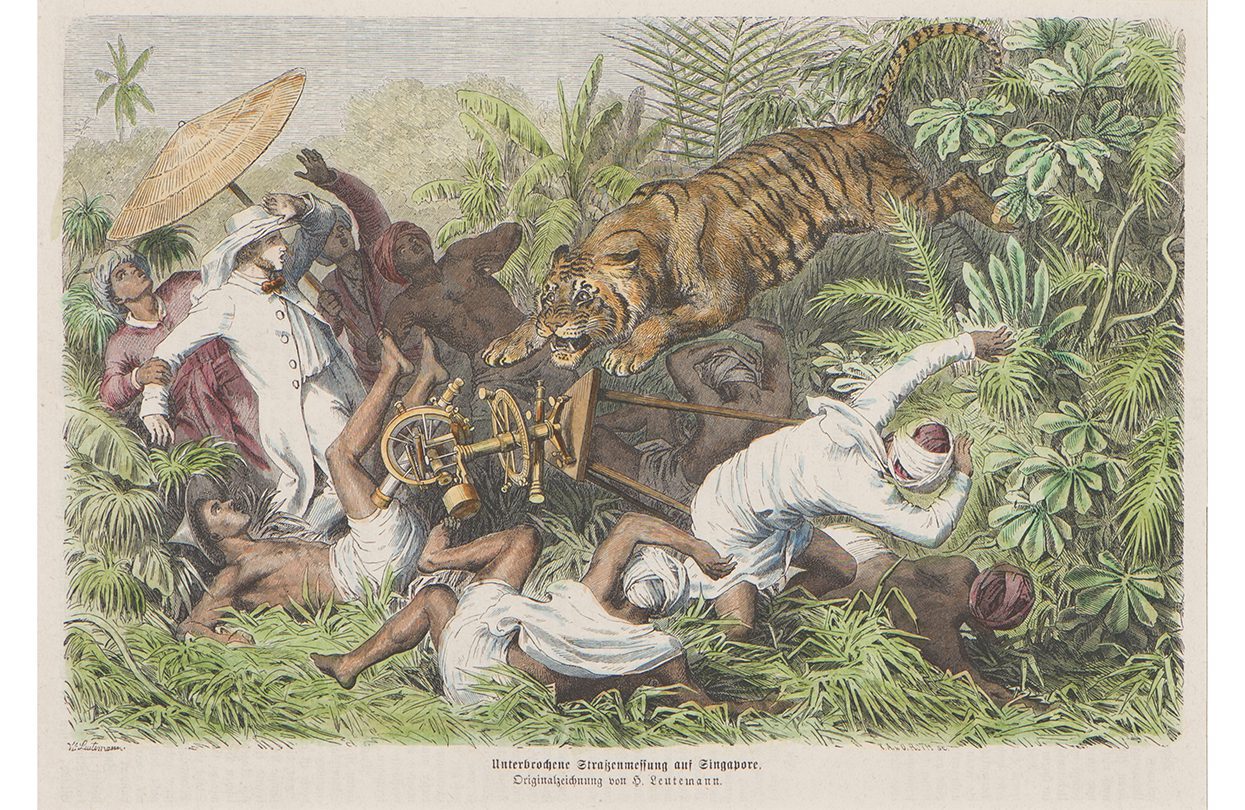
The woodblock print of Unterbrochene Straßenmessung auf Singapore (Interrupted Road Surveying in Singapore), by Heinrich Leutemann
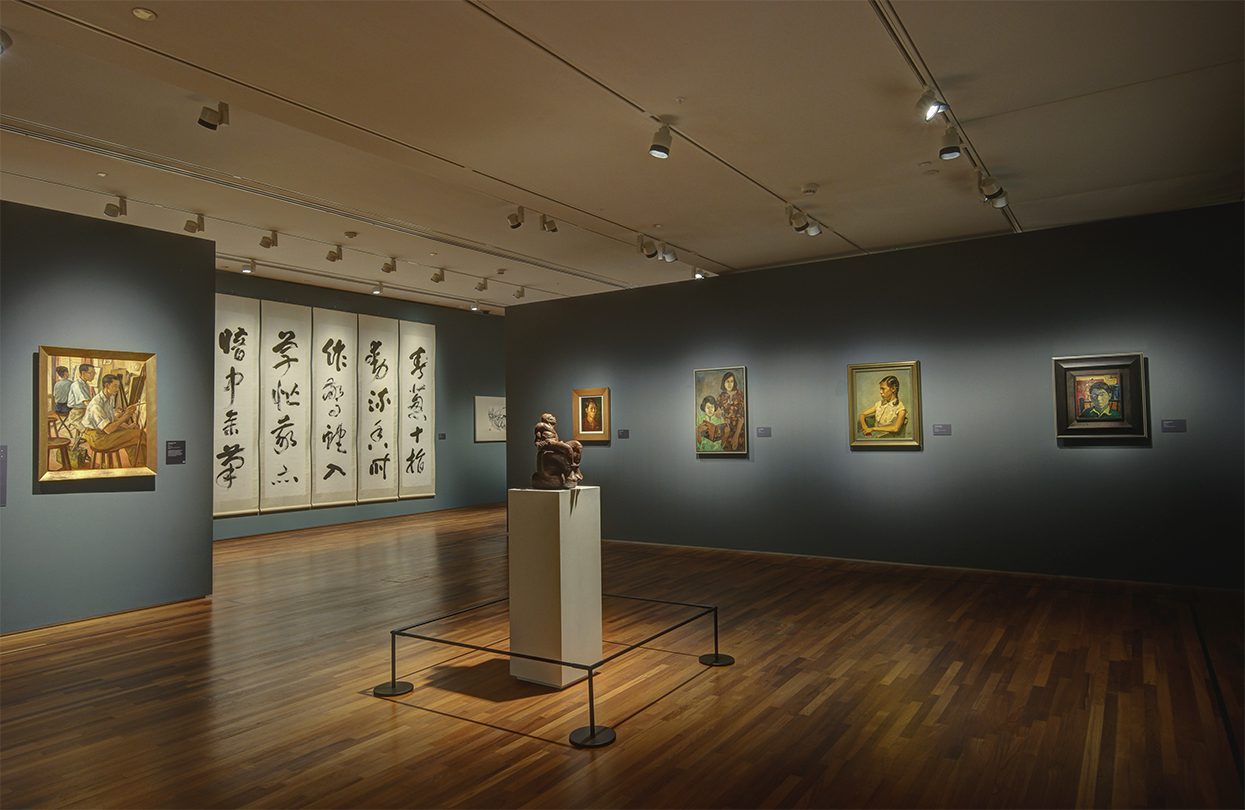
Siapa Nama Kamu_ exhibit
As Singapore’s economy flourishes and grows, its investment in art has increased in tandem. In the past decade alone, large-scale developments within the sector have occurred with dizzying frequency. In 2012, Gillman Barracks opened, a former British army camp reimagined into contemporary art galleries and a research centre. Two years later, the National Arts Council (NAC), the government body that “aims to nurture the arts in Singapore, and to make it an integral part of the lives of all Singaporeans,” set up the Public Art Trust, or PAT, with S$10 million in seed money. PAT’s mission is to give artists, especially Singaporeans, a new platform for their work, make art part of the city’s urban spaces and bring it closer to Singaporeans, a tangible way to democratise a medium sometimes viewed as elitist. And in November 2015, costing S$530 million, the National Gallery Singapore opened, the stylish union of the former Supreme Court and City Hall, now home to the largest collection of Singaporean and Southeast Asian art in the world. The government’s efforts have not gone unrewarded, and appreciation for the arts has boomed, borne out by figures from NAC’s Singapore Cultural Statistics 2018 report: Visual arts exhibitions grew from 858 in 2011 to 1077 in 2017, while during the same period, non-ticketed attendance at arts and cultural events increased from 10.5 million to 11.3 million.
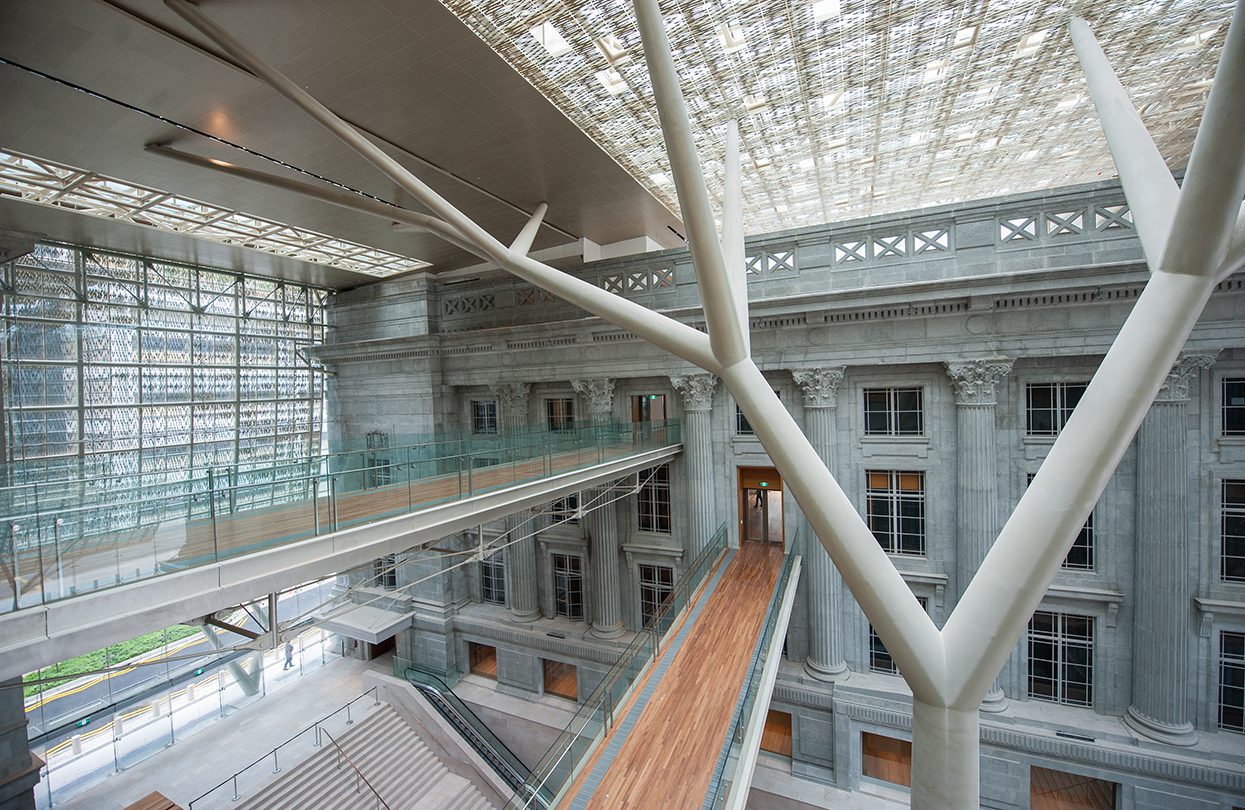
Link Bridges Upper Link and Lower Link – Image Credit to National Gallery Singapore
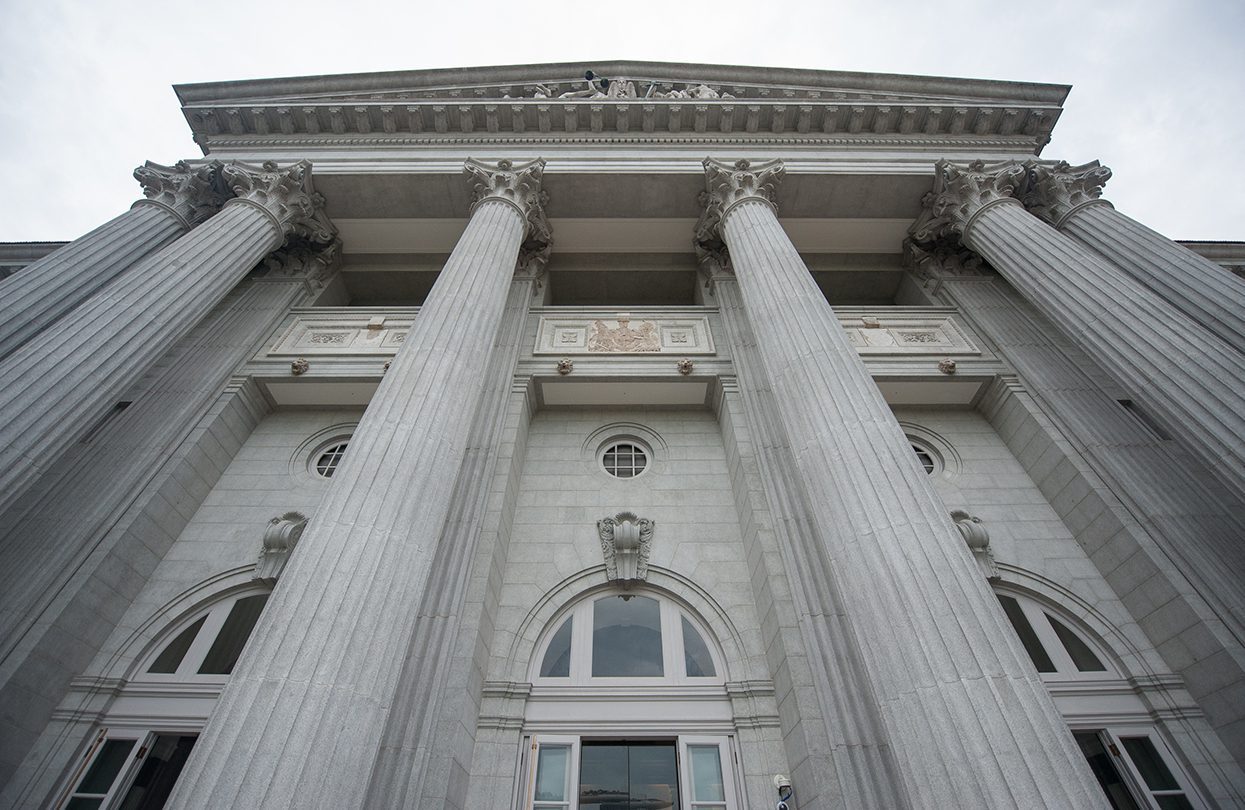
Supreme Court Balcony – Image Credit to National Gallery Singapore
The city continues to promote artistic ambition through many channels, from the annual Singapore Art Week to the sustainable art light festival iLight Singapore, and today the city proudly proclaims itself a global art hub. “The extensive infrastructure has enabled the growth of Singapore as a dynamic and highly interconnected platform for art in the region,” reflects Storer. “It has major art museums and collections, contemporary art institutions with international exhibition and residency programmes, a biennale and other arts festivals, several art schools and university galleries, and a variety of commercial galleries and art fairs. Singapore’s strategic location in Southeast Asia has also been crucial to its success as an art hub. It acts as a key meeting point for artists, curators, critics and art academics from around the world, and its unique regional – rather than just national – focus connects artists and artworks from across Southeast Asia.” Storer believes that even though Singapore is a relatively young nation, it takes art more seriously now than ever before. “It is able to offer a unique view on the world from a Southeast Asian position, ” while also helping to cast a global spotlight on Southeast Asian art, a role that will only continue to grow. ◼
By Sanjay Surana; Photographs courtsey National Gallery Singapore, Singapore Art Museum, National Heritage Board& Singapore Tourism Board.
Subscribe to the latest edition now by clicking here.
© This article was first published in Aug-Sept 2019 edition of World Travel Magazine.

